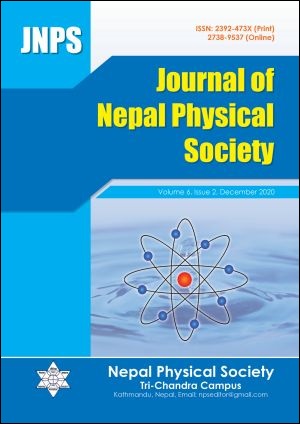Intra-molecular Conformational Stability in Human Growth Hormone
DOI:
https://doi.org/10.3126/jnphyssoc.v6i2.34856Keywords:
Intra-binding, growth hormone, hydrophobic, aromaticAbstract
Human growth hormone (hGH) is synthesized, stored and secreted by somatotropic cells within the lateral wings of the anterior lobe of pituitary glands; and is transported to other organs of human body. Study of intra-molecular structure and its binding mechanisms within the molecule gives more insight of structural stability of the molecule and is also essential in drug designing. In this article, we have investigated the various bonded and non-bonded interactions that contribute for the conformation of entire structure of the hGH molecule using molecular dynamics (MD) simulation. The MD outcomes show that the molecule is hydrophobic in nature. In its conformation, several types of interactions exist, such as disulphide bridges (bonded) and nonbonded: hydrogen bond, hydrophobic, aromatic-aromatic, ionic, aromatic-sulphur, cation-pi.
Downloads
Downloads
Published
How to Cite
Issue
Section
License
All right reserved. No part of this Journal may be reproduced in any form or by any electronic or mechanical means, including information storage and retrieval system, without permission in writing from the publisher, except by a reviewer who may quote brief passage in a review. The views and interpretation in this journal are those of author(s) and they are not attributable to the NPS.




